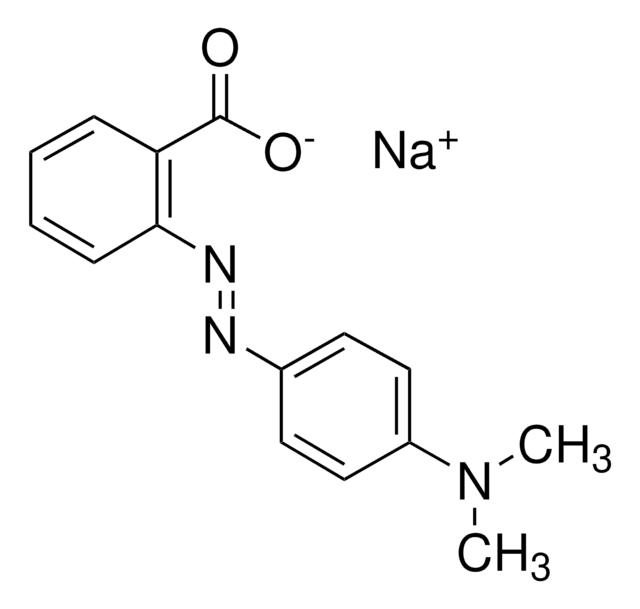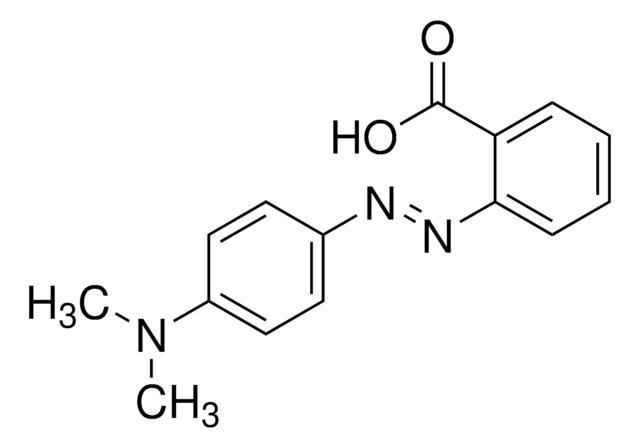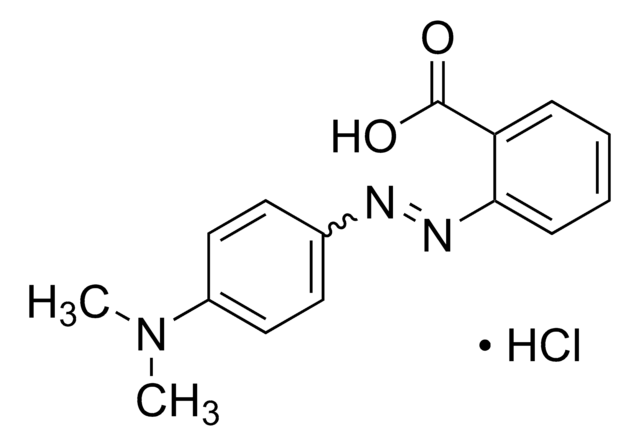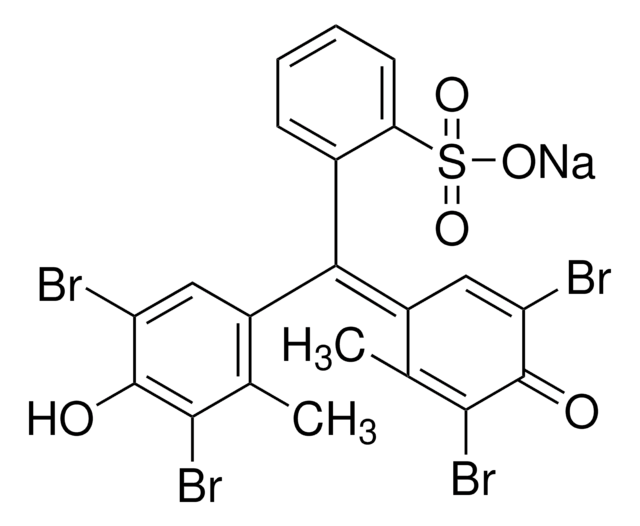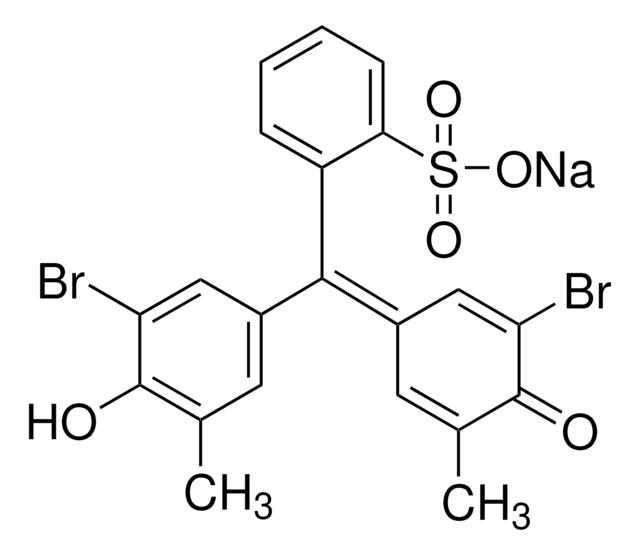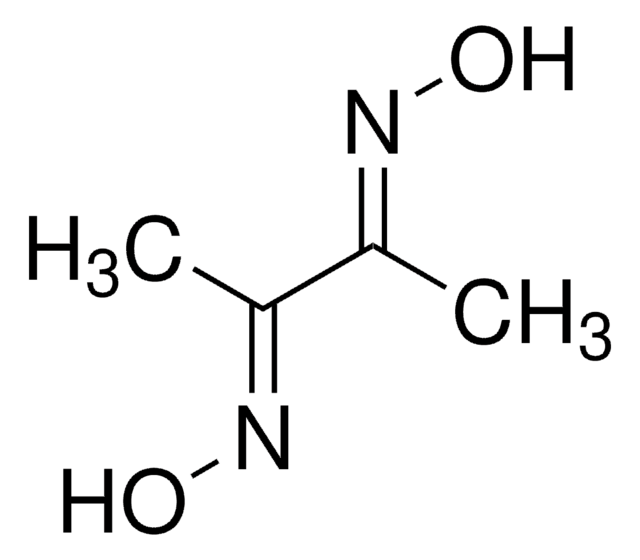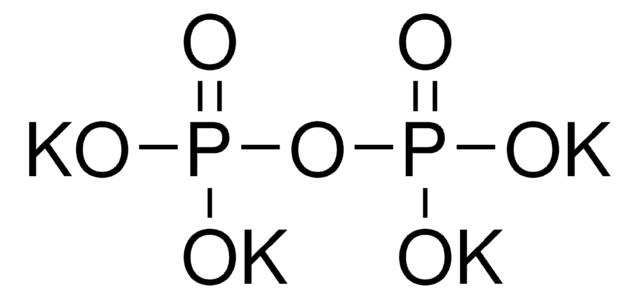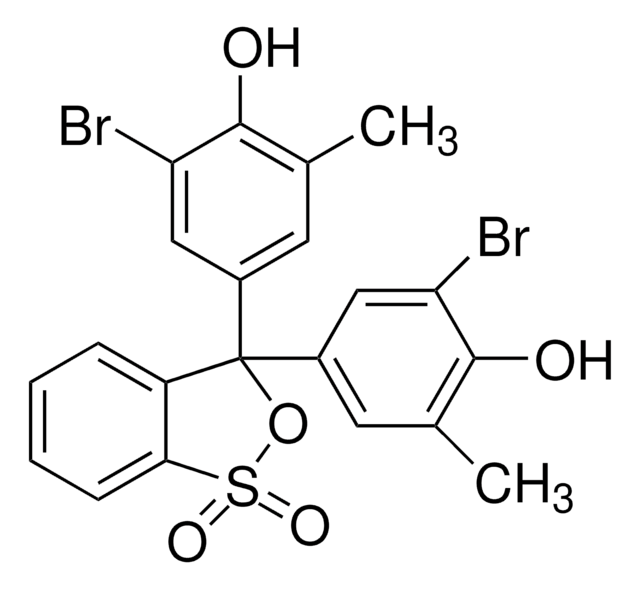M8256
Methyl Red sodium salt
Crystalline
Sinónimos:
4-Dimethylaminoazobenzene-2′-carboxylic acid sodium salt, Acid Red 2
About This Item
Productos recomendados
agency
suitable for SM 2310
suitable for SM 2320
Quality Level
form
powder
technique(s)
titration: suitable
visual transition interval
4.2-6.2, pink to yellow
solubility
soluble, clear, orange
application(s)
diagnostic assay manufacturing
hematology
histology
storage temp.
room temp
SMILES string
[Na+].CN(C)c1ccc(cc1)\N=N\c2ccccc2C([O-])=O
InChI
1S/C15H15N3O2.Na/c1-18(2)12-9-7-11(8-10-12)16-17-14-6-4-3-5-13(14)15(19)20;/h3-10H,1-2H3,(H,19,20);/q;+1/p-1/b17-16+;
InChI key
GNTPCYMJCJNRQB-CMBBICFISA-M
¿Está buscando productos similares? Visita Guía de comparación de productos
Categorías relacionadas
General description
Application
Storage Class
11 - Combustible Solids
wgk_germany
WGK 3
flash_point_f
Not applicable
flash_point_c
Not applicable
ppe
Eyeshields, Gloves, type N95 (US)
Elija entre una de las versiones más recientes:
¿Ya tiene este producto?
Encuentre la documentación para los productos que ha comprado recientemente en la Biblioteca de documentos.
Los clientes también vieron
Nuestro equipo de científicos tiene experiencia en todas las áreas de investigación: Ciencias de la vida, Ciencia de los materiales, Síntesis química, Cromatografía, Analítica y muchas otras.
Póngase en contacto con el Servicio técnico
